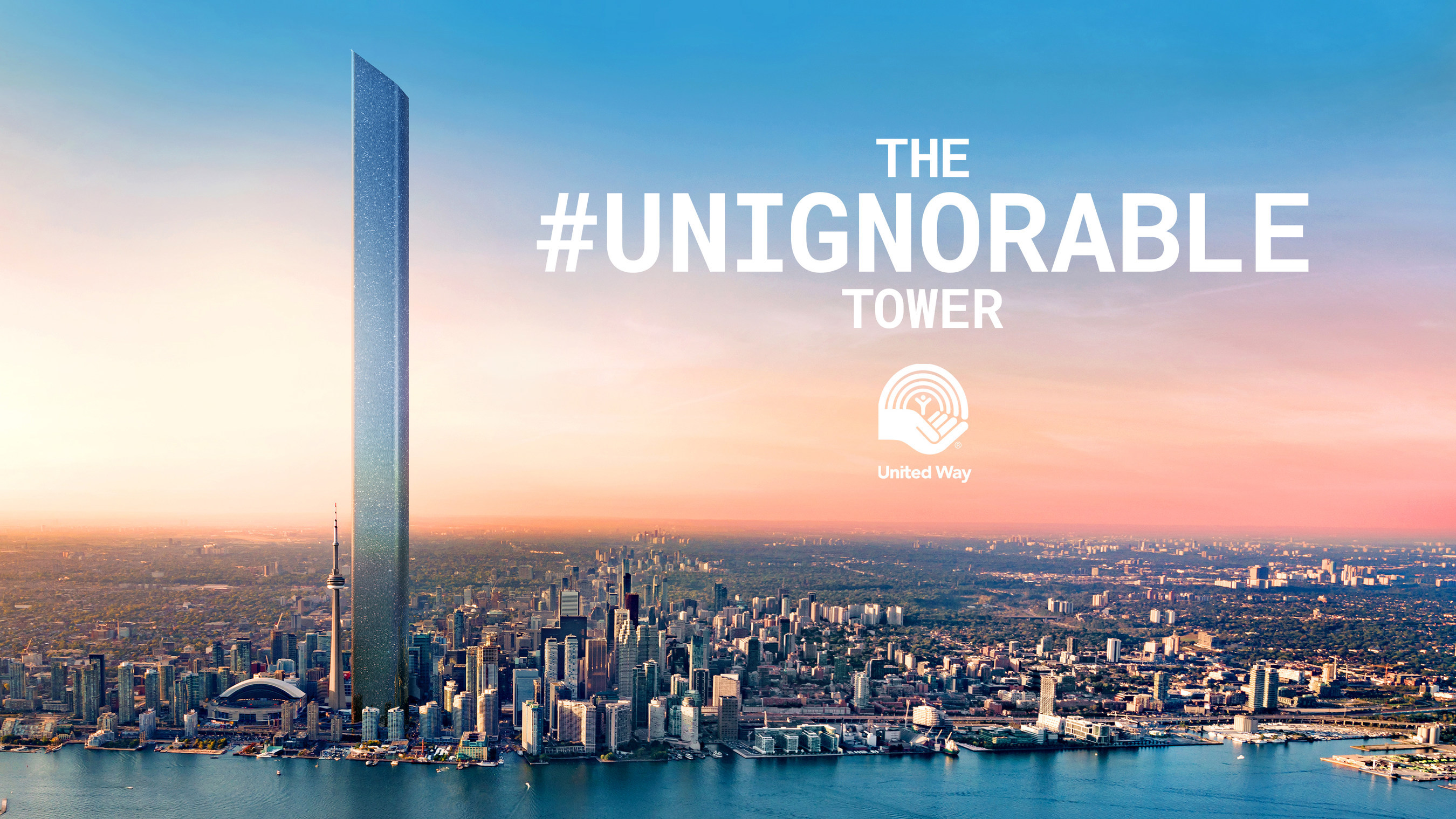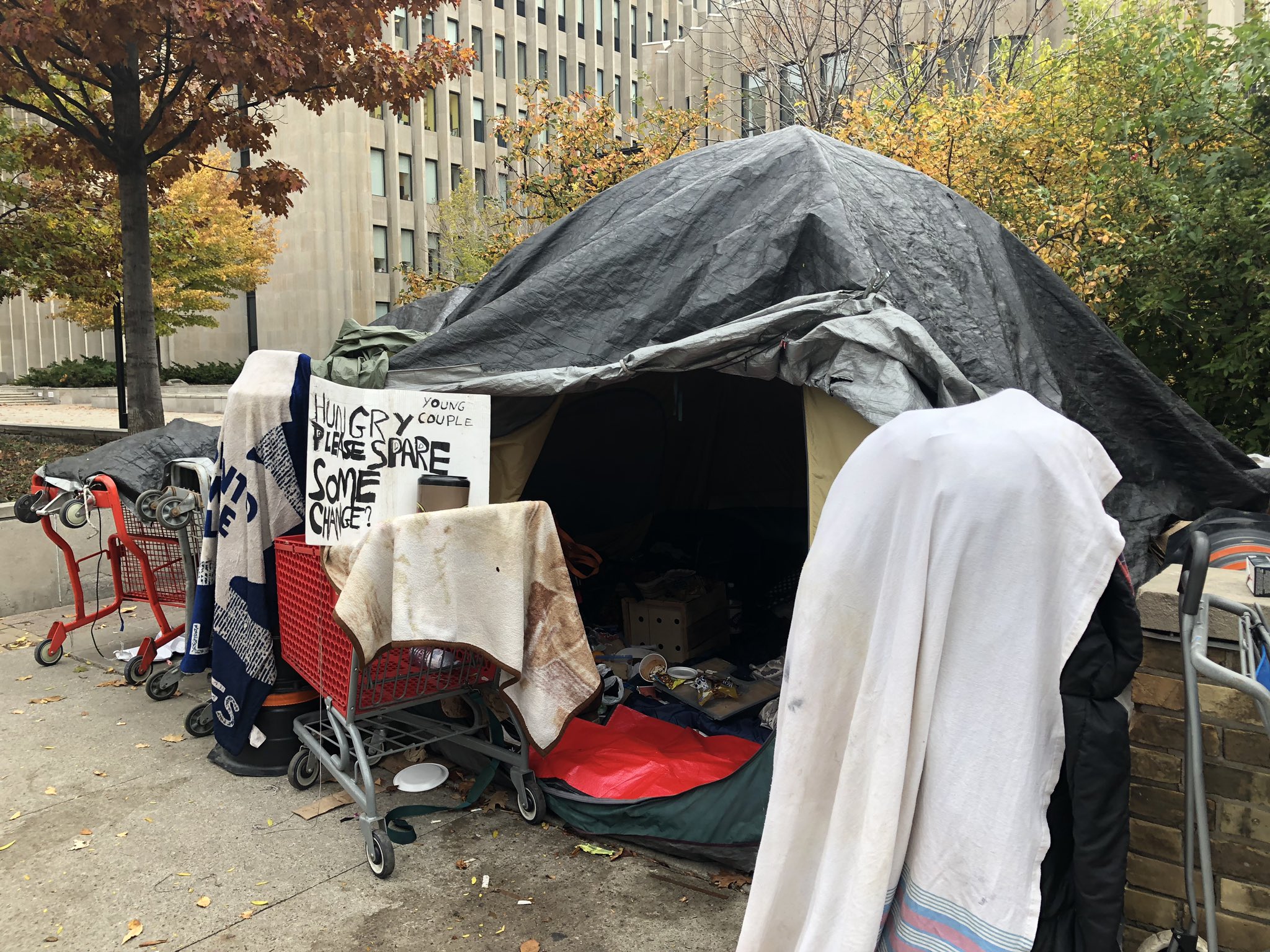
Our city-slicker daughter, Emily, shares interesting perspectives from the Big Smoke (Toronto) from time to time. Actually, she is quite intentional about experiencing the natural world on a regular basis, but she works in the canyons of buildings in downtown TO and her employer is a condo developer.
Yesterday she sent an image created by a friend's company for the United Way in Toronto. It shows a tower which dwarfs existing skyscrapers and the CN Tower and, needless to say, it's not real and never will be. It represents the size of a building required to house those who are homeless and in precarious housing in the city of Toronto and surrounding area. As one article puts it:
The #UNIGNORABLE tower isn't real, but the 116,000 individuals and families in York, Peel and Toronto and York Region who are struggling to put a roof over their heads are very real.
The United Way Greater Toronto is using augmented reality to erect a tower on the Toronto skyline as part of its #UNIGNORABLE campaign to increase awareness about the fact more people are living in poverty in the GTA than anywhere else in the Canada — and to encourage action on the issues that hold people back.
The United Way website offers this:
POVERTY IN THE GTA CAN BE EASY TO IGNORE. THIS TOWER WOULD MAKE IT #UNIGNORABLE.
With its beautiful skyline, the GTA appears to be a prosperous and thriving region. In many respects, it is. At the same time, it’s the poverty capital of Canada with 1 in 7 residents currently struggling to make ends meet.
Standing at over 2.5 times the height of the CN Tower, The #UNIGNORABLE Tower was imagined to represent the scale of the problem, and bring attention to this big and complicated issue.

This morning I heard a representative from an interfaith coalition addressing homelessness in Toronto on CBC radio speaking about the crisis of availability for shelter beds in the city. Many of the homeless are living in tents in ravines, under expressways, in public parks, and now on street corners. They tend to set up only to be moved along by police, often fined, a bizarre practice given they have no money. Beyond this group are the working poor who simply can't afford housing in an expensive city.
It's gratifying to know that organizations such as the United Way and faith groups are raising the profile of a situation which is too easily ignored because the poor are rarely heard and often not seen. The numbers suggest that there is a long way to go to address the need.
No comments:
Post a Comment